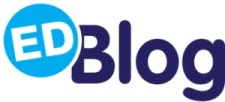With the rise of the use of technology in the classroom – in particular handheld devices such as tablets – there are questions being increasingly raised as to the future of the printed textbook and whether it has a place in the classroom now or in the near future.
Textbooks have been the mainstay of teaching for over a hundred years and give structure to teaching sessions and markers for pupil progress and achievement.
With the increase in online learning and the use of interactive apps as part of classroom time, some feel that there is the possibility that the days of the textbook are numbered. This opinion however is challenged by those who feel that a textbook can never completely be made redundant for a number of reasons.
The advantages of the textbook
For those starting their career in teaching, textbooks are a boon. They show the material and curriculum areas which must be covered and structure of each lesson plan is already available to be used as a framework to build upon.
A textbook is organised – topics are given in set units of work and can often be presented chronologically so this means that as long as the textbook is covered over the prescribed amount of time within in the term, everything required will have been completed.
Textbooks don’t offer surprises; they are detailed and sequential and so a teacher knows what to do and when to do it. Their linear design means that they are a full scheme of work and are approved for use by the school so as long as the work in the textbook is completed on time, extra activities can be used to enrich learning, increase understanding and add to the overall pupil experience.
A textbook is just as important for the pupil as the teacher. If their learning style favours reading from printed matter rather than reading from a screen, they will benefit much more from having their own textbook. They are also vital in that not everyone has access to online resources at home and so non-textbook coursework puts the pupil at an unfair disadvantage if the work to be covered is all online.
Disadvantages of the textbook
A textbook, once published can quickly go out of date if there is a change to the curriculum. Errors cannot be rectified until the next print run unless additional pages are issued and they can be felt to be cumbersome by the pupils and are easily lost, left at home or in various other locations which means that they aren’t available during lesson time.
A textbook has a very non-technological image and can be viewed as a staid teaching aid by pupils who are now more used to accessing all information they need online.
For those with literacy issues such as dyslexia, the ‘one size fits all’ aspect to a standard textbook can produce problems with reading the work whereas text on-screen can be enlarged if possible or the font type changed so it is easier to read.
With very little interactivity opportunity with a textbook as opposed to online activities and apps, they don’t appeal to kinaesthetic learners and as the answers to questions in a textbook are usually included, they are often seen as just as way to gather correct answers rather than challenging them to think about how they reached their conclusions.
The role of the textbook in the classroom
A textbook is a tool which should always be used with care. It’s a teaching aid which can be used as a guide and a way of monitoring progression and is a structure to hang a lesson on (but never relied on) but needs to be accompanied by many other tools to be seen as a rounded part of an overall teaching programme. If a textbook were to be viewed as a hammer for example, it would be great for some jobs but wouldn’t be at all suitable for others.
Other tools from the box are needed to carry out a professional job and it’s the same for a textbook – it certainly still has its place in the toolbox but should be used judiciously to ensure that it has a set job to complete certain tasks and the skilled teacher recognises the other tools available – electronic or otherwise – to complement the textbook to complete all the required tasks.









